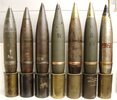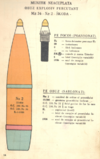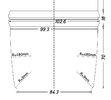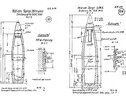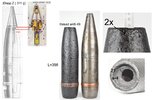Hi,
I am looking for a photo or good quality drawing [and shell length] of a Yugoslav 100 mm HE shell for Skoda howitzers.
In German nomenclature: 10-cm Sprgr. (Dopp.Z.) 311 (j).
Shell without reducing screw. Thread ~48 mm / for Czech VG SKR and VG CR fuzes.
First of all, it is about the shape of the rear part of the shell - in the US drawing it looks straight cut - different from 100 mm Czech and Polish shells (rounded, for example in the drawings a Czech 10 cm dopp z gr 30 [t]).
The photo from the German manual [a/left] is blurry but shape of the rear part looks like as at drawing, but the ring probably does not have a groove [?].
I also wonder if any other country used this version - a 48 mm thread and a shell without a reduction screw and a rounded back part.
I will be grateful for your help.
Regards,
PM
I am looking for a photo or good quality drawing [and shell length] of a Yugoslav 100 mm HE shell for Skoda howitzers.
In German nomenclature: 10-cm Sprgr. (Dopp.Z.) 311 (j).
Shell without reducing screw. Thread ~48 mm / for Czech VG SKR and VG CR fuzes.
First of all, it is about the shape of the rear part of the shell - in the US drawing it looks straight cut - different from 100 mm Czech and Polish shells (rounded, for example in the drawings a Czech 10 cm dopp z gr 30 [t]).
The photo from the German manual [a/left] is blurry but shape of the rear part looks like as at drawing, but the ring probably does not have a groove [?].
I also wonder if any other country used this version - a 48 mm thread and a shell without a reduction screw and a rounded back part.
I will be grateful for your help.
Regards,
PM



